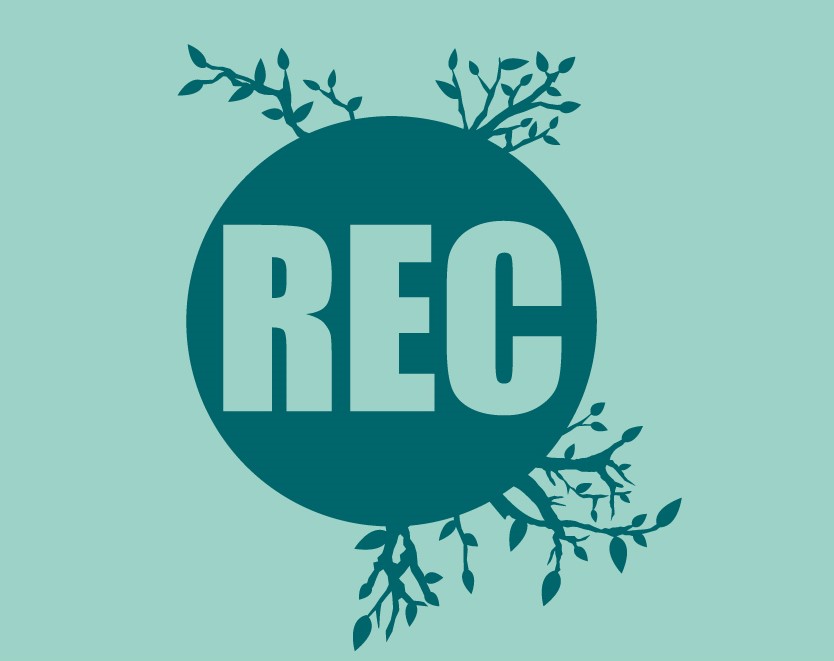
H2020 REC Project: Root zone soil moisture estimates at daily and agricultural plot scales for crop irrigation management and water use impacts: a multi-sensor remote sensing approach
- Type Project
- Status Filled
- Execution 2015 -2019
- Assigned Budget 895.500,00 €
- Scope Europeo
- Main source of financing Horizon 2020
- Project website REC
Sustainable water use is a growing concern in Europe. Today, agriculture exerts significant pressure on water resources, especially in Mediterranean countries, where irrigation can account for up to 80% of water consumption. Therefore, increasing water-use efficiency in agriculture has been identified as one of the key issues related to water scarcity and drought. There is now a need to improve irrigation management on farms, adjusting it to crop water needs throughout the growing season. Modern irrigation agencies rely on in situ measurements of soil moisture in the root zone to detect the onset of crop water stress and trigger irrigation. However, in situ point measurements are generally unavailable over large areas and may not be representative at the field scale. While remote sensing provides cost-effective techniques for monitoring large areas, there is currently no dedicated algorithm for monitoring soil moisture in the root zone at the plot scale. REC proposes a solution to the need for knowledge of soil moisture in the root zone at the crop scale for irrigation management. It is based on an innovative operational algorithm that seeks to: 1) map daily soil moisture in the root zone at the field scale and 2) quantitatively assess the different components of the water balance at the field scale from readily available remote sensing data. The methodology is based on the coupling between a surface model representing water fluxes at the interface between the land surface and the atmosphere (infiltration, evaporation, transpiration) and in the soil (drainage), and remote sensing data composed of land surface temperature and near-surface soil moisture, retrieved from microwave radiometers and radars. These estimates will be integrated into an irrigation management system that will be used to trigger irrigation. In addition, these estimates will allow for an impact assessment of consumptive water use and the water footprint.
The following specific objectives have been met:
INNOVATIVE EO Objective: To define, develop, and implement innovative algorithms for estimating near-surface soil moisture at high spatial resolution from Earth Observation data. NSSM has been obtained at high spatial (field-scale) and temporal (3-day) resolution by developing synergies between SMOS passive microwave data, Sentinel-1 active microwave data, and Sentinel-3/MODIS/Landsat optical data.
As a result, we can provide high-resolution NSSM every 3 days in all weather conditions.
VALIDATION Objective: Perform validation experiments regularly using in situ, EO and modeling activities for all REC estimates.
In coordination with the respective irrigation agencies of Segarra-Garrigues (ASG) and the irrigated perimeter of the Haouz plain (ORMVAH), intensive field campaigns were implemented during 2015, 2016, 2017, and 2018.
As a result, we have the means to fully validate EO products and water flows covering a wide range of soil moisture and irrigation conditions.
NETWORK Objective: To build a network for cross-sector knowledge exchange and long-term collaboration in the field of remote sensing applications for water resources management.
REC builds on existing or completed European R&D projects aimed at optimizing irrigation management, and partners have already collaborated on international projects. This project framework strengthens these ties and helps reach institutions and companies working in the irrigation sector.
We organized three open days for the project and a final international workshop with an ever-increasing number of experienced attendees.
A framework is being implemented to facilitate a strong and cohesive community (scientific/operational; research/industrial) in multidisciplinary research on water resources (hydrologists, agronomists, water resource managers, etc.).
As a result, the integration of ongoing synergistic international activities to impact irrigation and water use is facilitated.
Objective: DISSEMINATION: To promote the results of the REC project through open workshops and seminars, webinars, peer-reviewed scientific articles, a web portal, brochures, newsletters, and films to boost the results in future operational services.
The following promotional actions have been carried out:
- Three open days and a final workshop
- 8 workshops
- Several field training sessions, 4 webinars and in-person courses
- 6 doctoral conferences and 3 doctoral lectures scheduled for 2019, 6 doctoral programs in progress
- Presence in more than 50 conferences in more than 10 countries
- 21 publications in international peer-reviewed scientific journals
- Two films
- Presence at 18 intermediation events and 5 fairs
As a result, we have seen an increasing number of attendees at open seminars and webinars and have strengthened the REC network.
Sustainable water use is a growing concern in Europe. Today, agriculture exerts significant pressure on water resources, especially in Mediterranean countries, where irrigation can account for up to 80% of water consumption. Therefore, increasing water use efficiency in agriculture has been identified as one of the key issues related to water scarcity and drought. There is now a need to improve irrigation management on farms, adjusting it to the water needs of crops throughout the growing season.
Modern irrigation agencies rely on in situ measurements of soil moisture in the root zone to detect the onset of crop water stress and trigger irrigation. However, in situ spot measurements are generally not available over large areas and may not be
representative at the field scale. While remote sensing provides cost-effective techniques for monitoring large areas, there is currently no specific algorithm for monitoring soil moisture in the root zone at the plot scale.
REC proposes a solution to the need to understand soil moisture in the root zone at the crop level for irrigation management. It is based on an innovative operational algorithm that seeks to:
1) map soil moisture in the root zone daily at field scale and
2) quantitatively assess the different components of the water balance at the field scale using readily available remote sensing data.
The methodology is based on the coupling of a surface model representing water fluxes at the interface between the land surface and the atmosphere (infiltration, evaporation, transpiration) and in the soil (drainage), and remote sensing data composed of land surface temperature and near-surface soil moisture, retrieved from microwave radiometers and radars.
These estimates will be integrated into an irrigation management system that will be used to activate irrigation. These estimates will also allow for an impact assessment of consumptive water use and the water footprint.
Sustainable water use is a growing concern in Europe. Currently, agriculture exerts significant pressure on water resources, especially in Mediterranean countries, where irrigation can account for up to 80% of water consumption. Therefore, increasing water use efficiency in agriculture has been identified as one of the key issues related to water scarcity and drought (EEA Report No. 1/2012). It is now necessary to improve irrigation management on farms, adjusting it to the water needs of crops throughout the growing season.
Modern irrigation agencies rely on in situ measurements of soil moisture in the root zone to detect the onset of crop water stress and trigger irrigation. However, in situ spot measurements are generally unavailable over large areas and may not be representative at the field scale. While remote sensing provides cost-effective techniques for monitoring large areas, there is currently no specific algorithm for monitoring soil moisture in the root zone at the plot scale.
REC proposes a solution to the need for understanding soil moisture in the root zone at the crop scale for irrigation management. It is based on an innovative operational algorithm that will allow, for the first time: 1) mapping of soil moisture in the root zone daily at the field scale and 2) quantitatively assessing the different components of the water balance at the field scale using readily available remote sensing data.
The methodology is based on the coupling of a surface model representing water fluxes at the interface between the land surface and the atmosphere (infiltration, evaporation, transpiration) and in the soil (drainage), and remote sensing data composed of land surface temperature and near-surface soil moisture retrieved from microwave radiometers and radars.
These estimates will be integrated into an irrigation management system that will be used to activate irrigation. These estimates will also allow for an impact assessment of consumptive water use and the water footprint.
The team had previously implemented and validated a disaggregation algorithm (DISPATCH) to provide 1 km resolution NSSM data from SMOS and MODIS data (Merlin et al. 2013).
During the development of the project, the following aspects have been addressed:
- Improving the temporal resolution of 1 km resolution DISPATCH data by assimilating the data into a land surface model (Malbéteau et al. 2017)
- Identify the strengths and weaknesses of existing soil moisture downscaling methods to open new avenues of research (Peng et al. 2017)
- Investigate different approaches to model backscatter data for NSSM estimation (Gao et al. 2017)
- Develop an innovative approach to exploit the complementarity between the thermally disaggregated SMOS NSSM (no calibration required) and the Sentinel-1 derived NSSM (with the need to calibrate the radiative transfer model) at 100 m resolution (Escorihuela et al. 2017)
As a result, we can provide high-resolution NSSM every 3 days in all weather conditions.
During the second REC reporting period, the following aspects were addressed:
- Investigate potential synergies between Sentinel-1 data and an NSSM proxy derived from LandSat-7/8 thermal data (Amazirh et al. 2018)
- A better representation of the partitioning between soil evaporation and plant transpiration (Aït Hssaine et al. 2018)
- Improve the spatial resolution of MODIS/Terra LST by integrating the high spatial resolution of NSSM derived from Sentinel-1 (Amazirh et al., 2019).
As a result, we can provide high-resolution RZSM every 3 days in all weather conditions.
To accurately estimate all components of the surface water cycle by developing an innovative coupling between a land surface model (LSM) representing water fluxes at the land surface-atmosphere interface and in the soil, and remotely sensed NSSM and RZSM.
During the second REC reporting period, the following aspects were addressed:
- Assimilate the LST and Fc data in the FAO-2Kc model and simulate the RZSM as the state variable of the water balance resulting from the inflow (irrigation, precipitation) and outflow (transpiration, evaporation and drainage) water flows (Olivera et al. 2018).
- Improving our understanding of plant transpiration using the FAO formalism (Ayyoub et al. 2017).
- Propose a new soil evaporation model driven by near-surface soil moisture and with calibration capabilities from soil texture or LST information (Merlin et al. 2018).
- Addressing the representation of drainage within the FAO-56 water balance model (Nassah et al. 2018).
As a result, there is a clear improvement of LSM over the state of the art.
- ISARDSAT SL (isardSAT)






